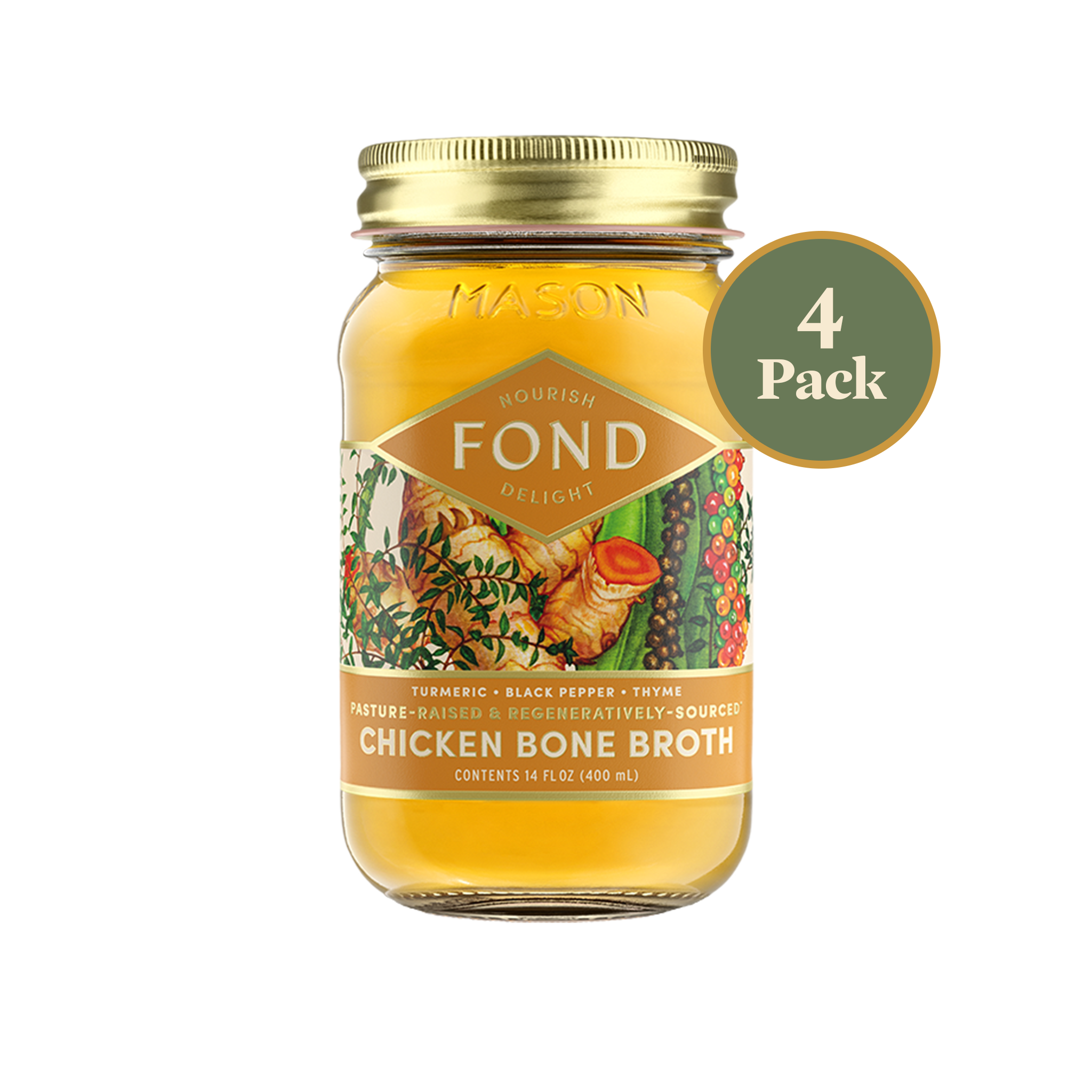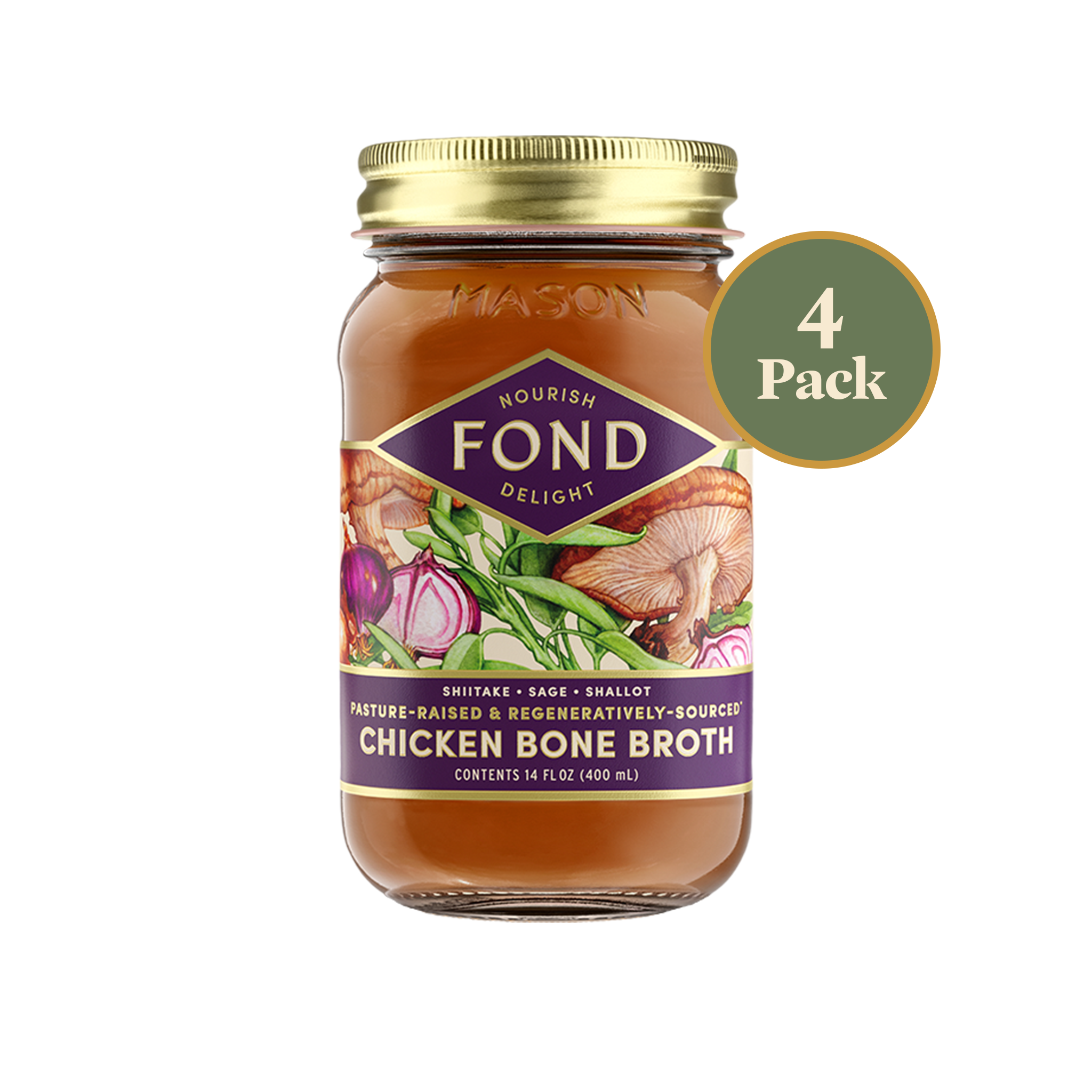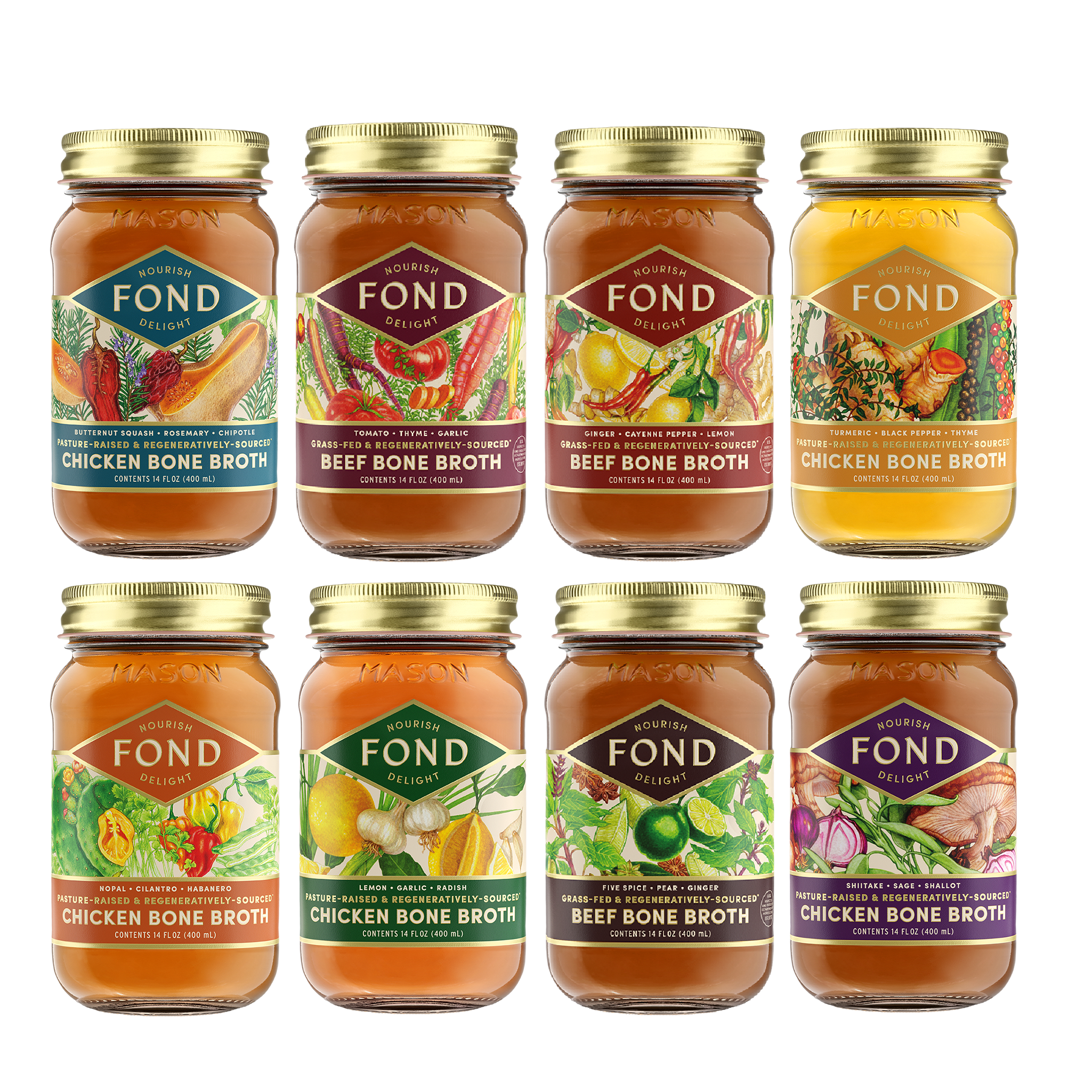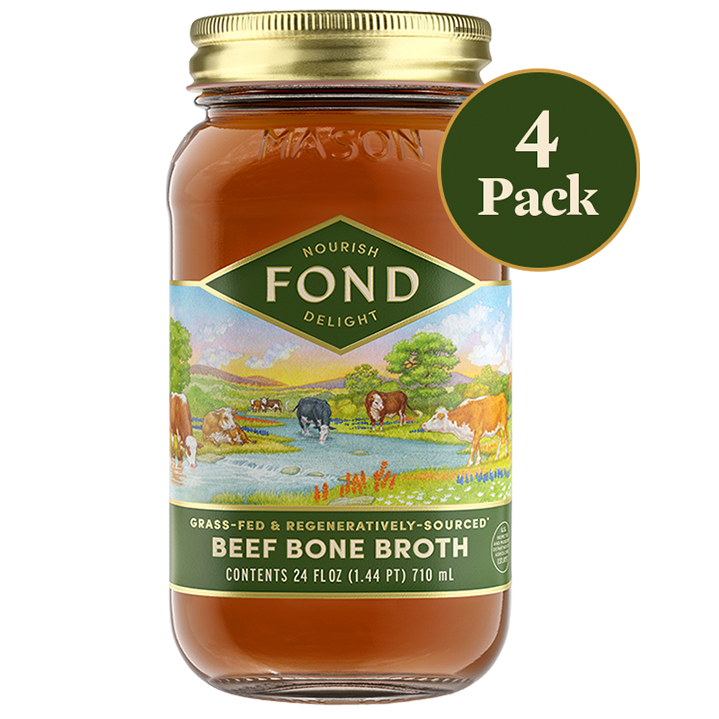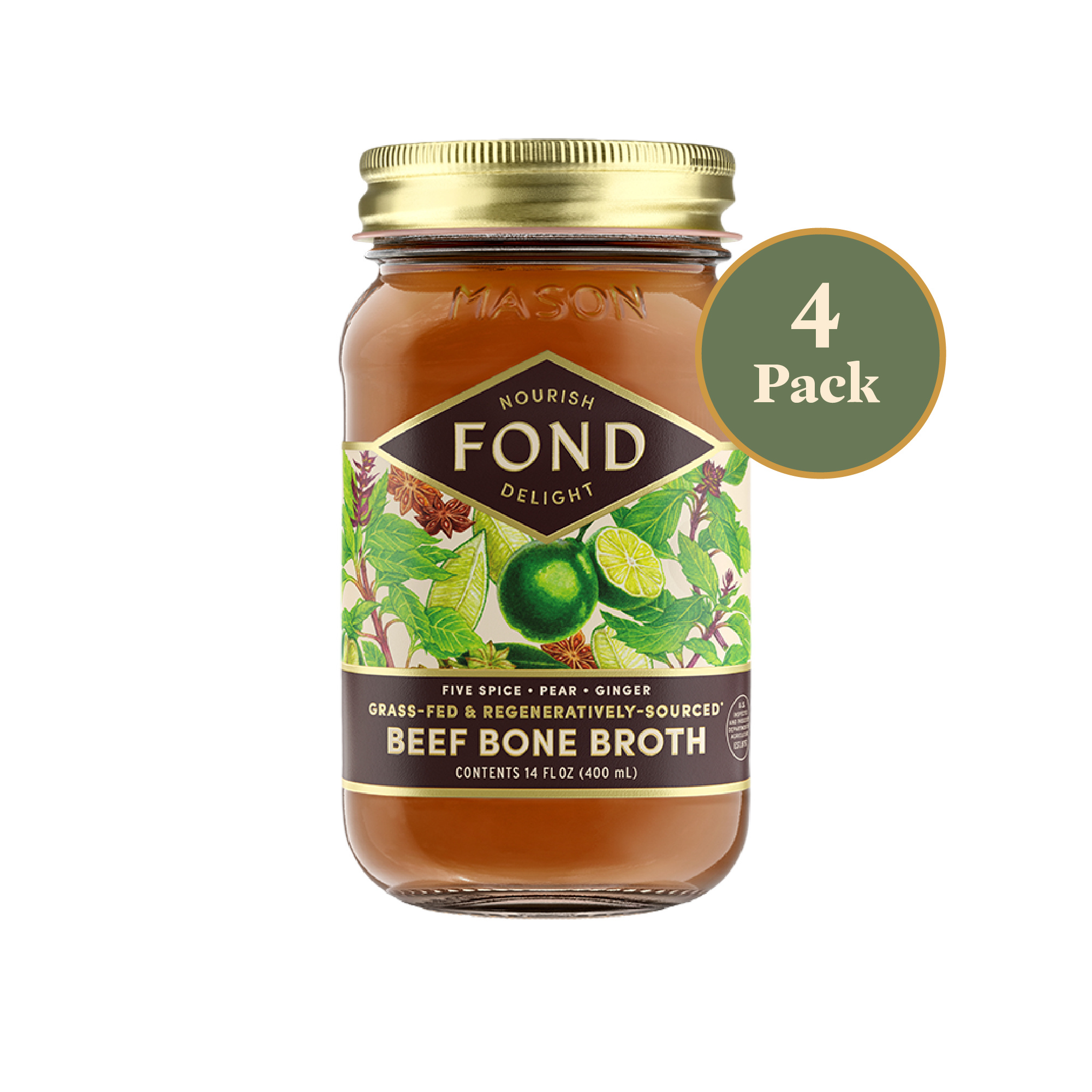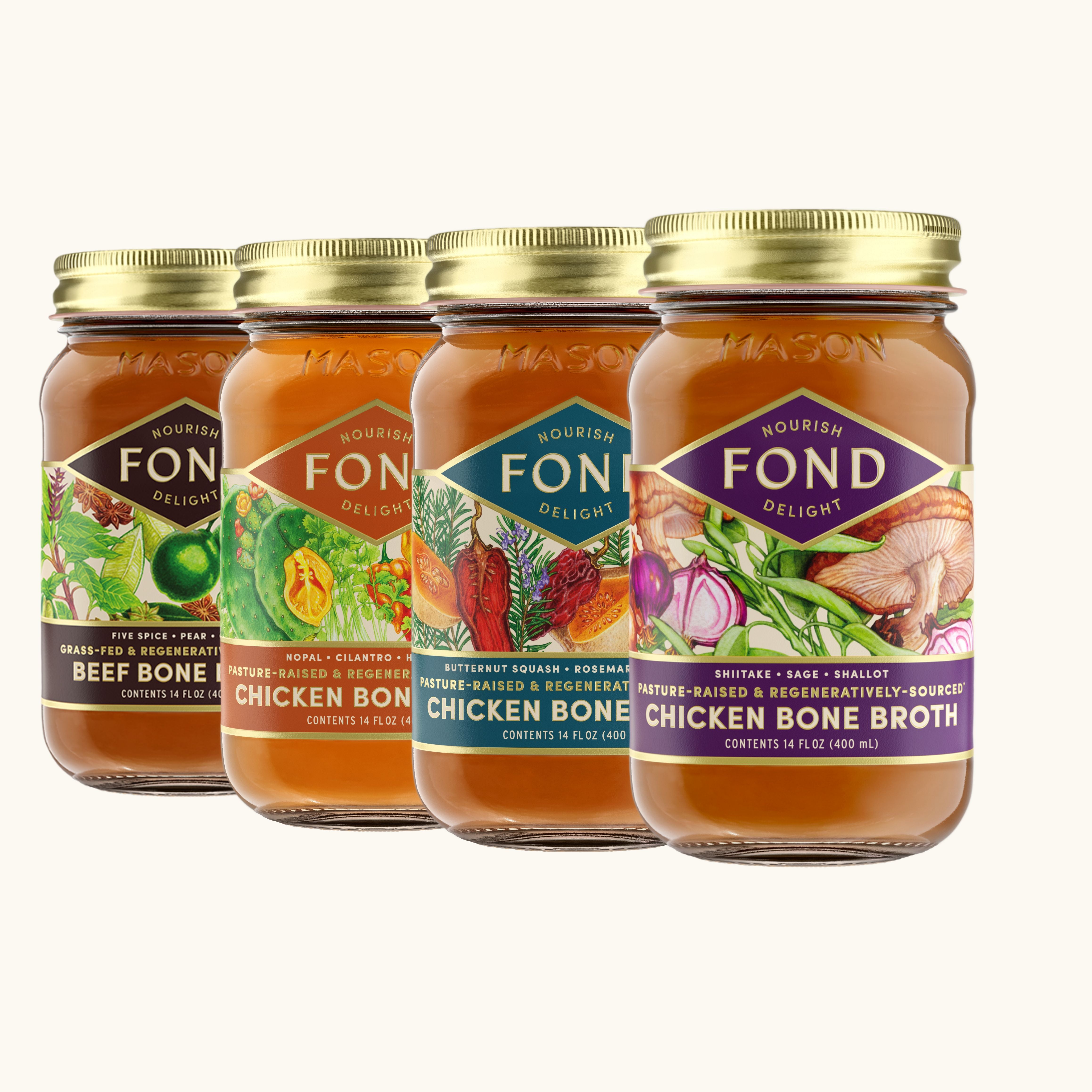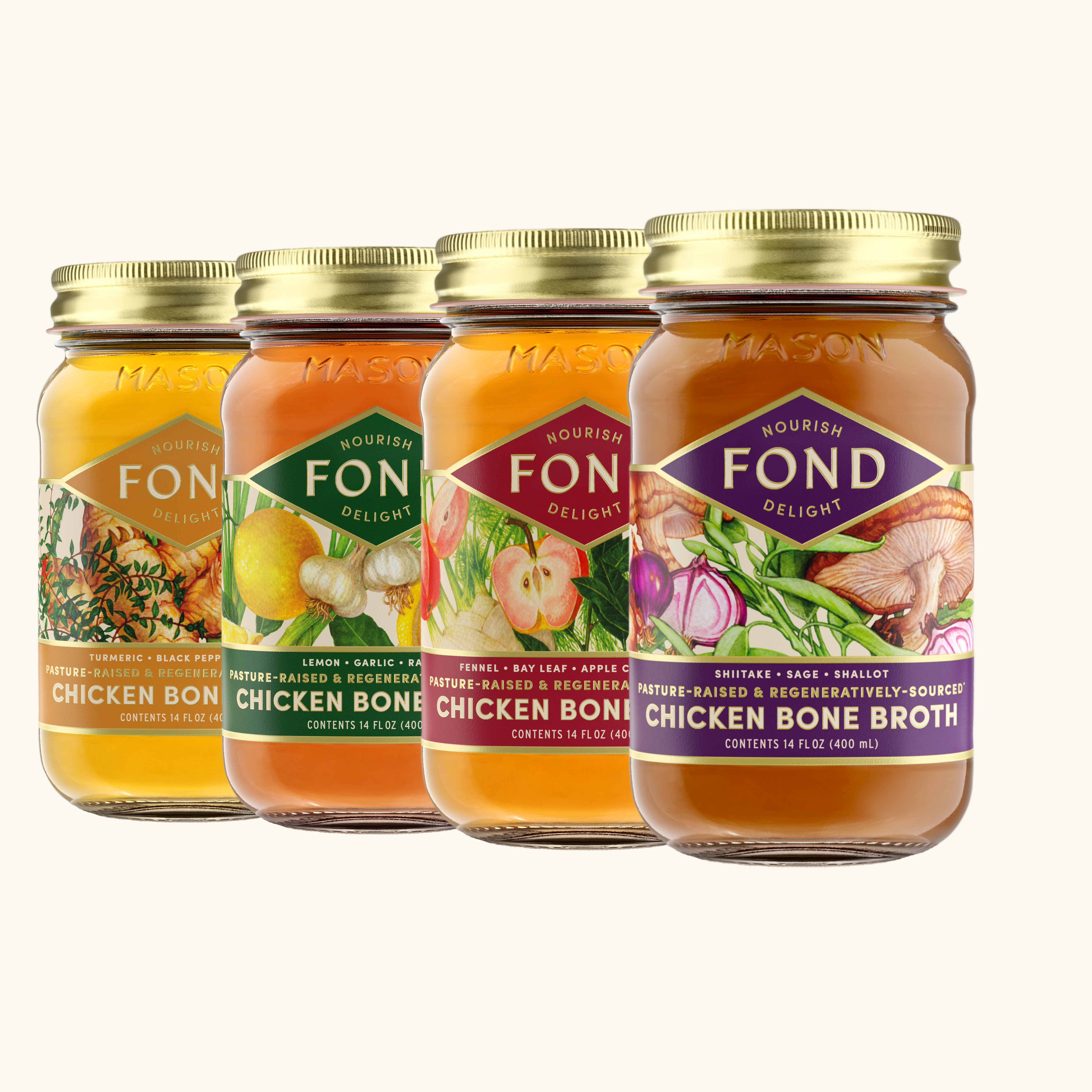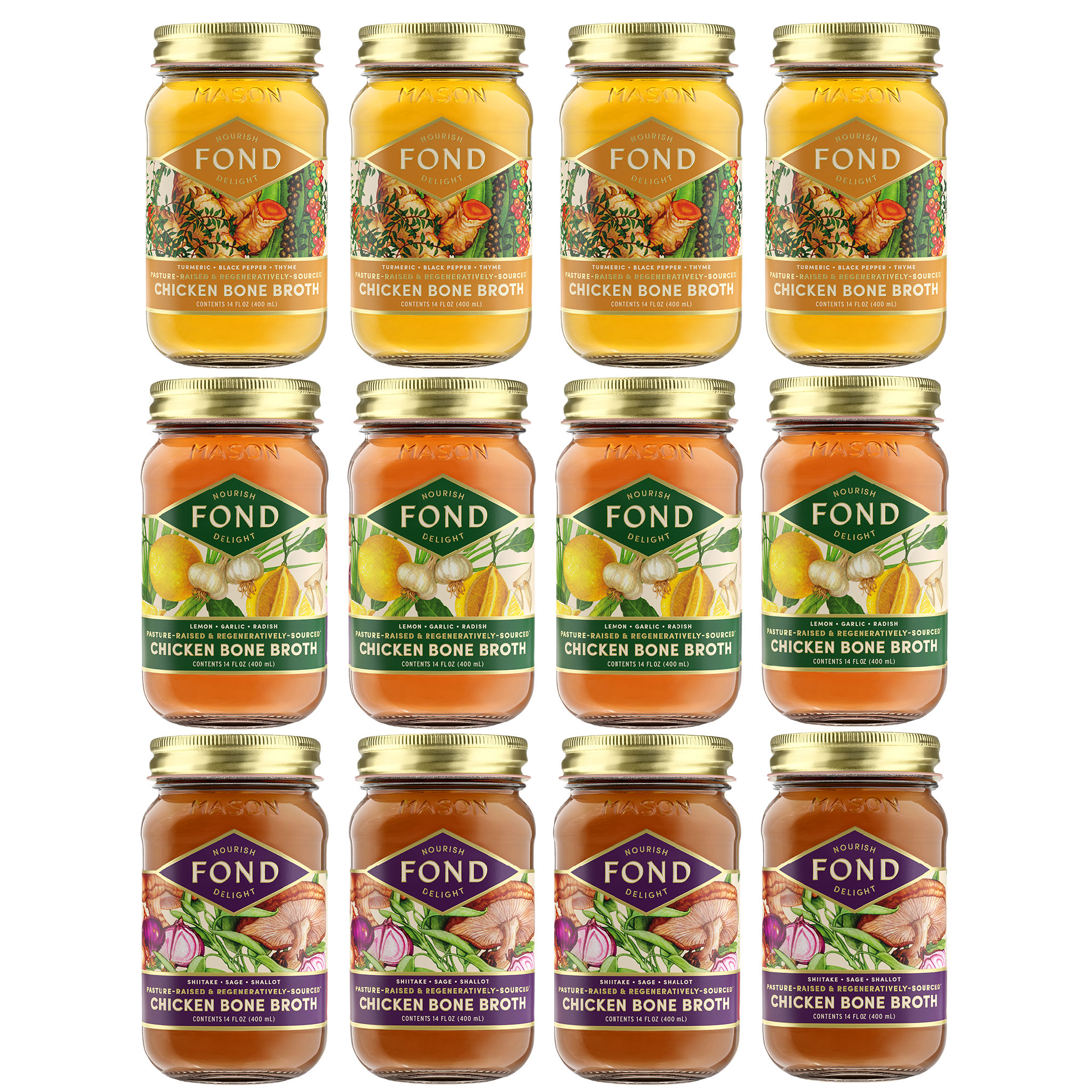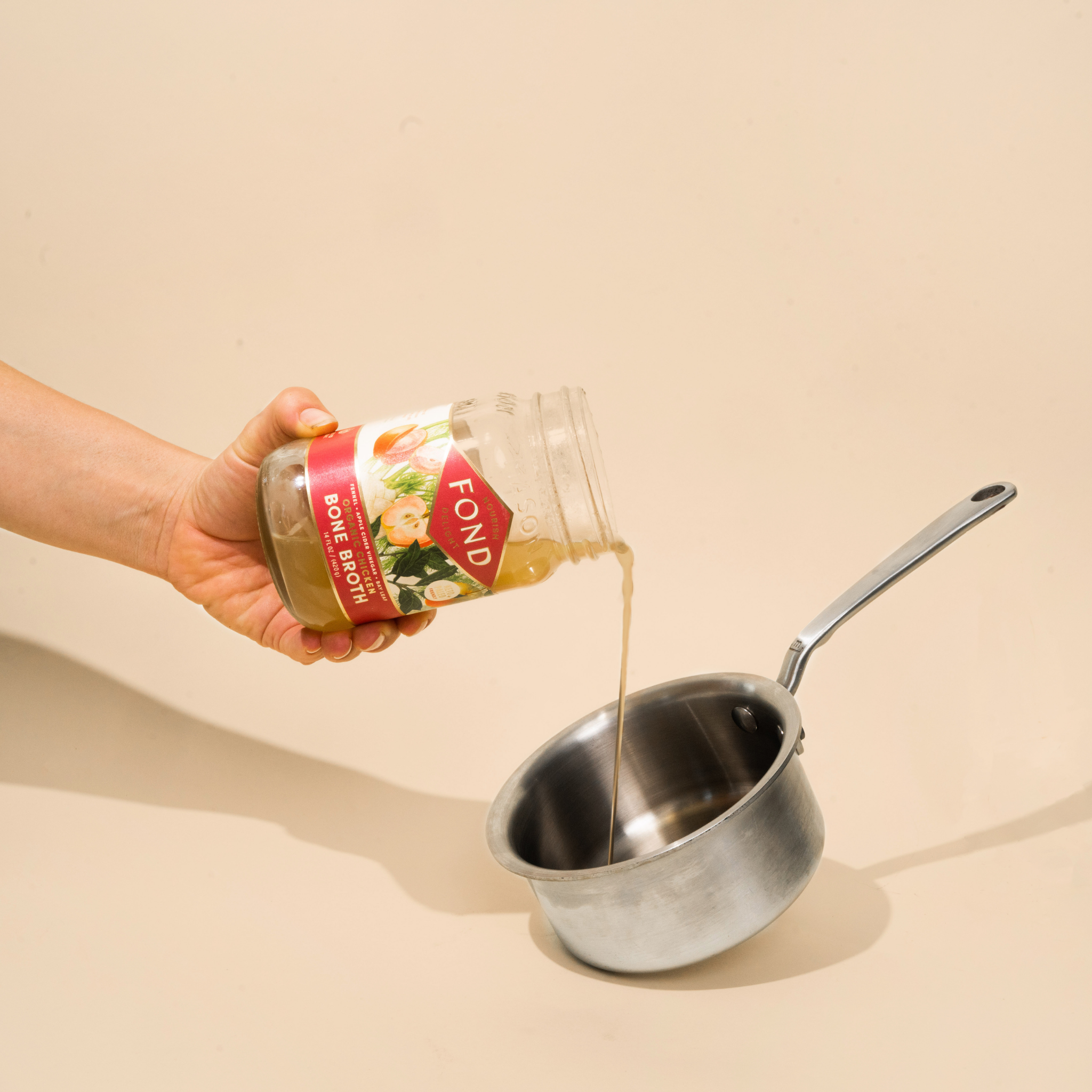If you ever tried McDonald’s fries before the ‘90s, you may not have realized that they had a secret ingredient; beef tallow! It was replaced with vegetable oil in the early ‘90s, which was both a flavor and nutrition blunder. Time-honored, nutrient-dense tallow gives food a rich, buttery flavor that just can’t be replicated by oils and butters.
And we’ve brought it back in a major way with FOND’s Beef Tallow, the ONLY infused tallow on the market.
How Beef Tallow is Made
Tallow is primarily made from cattle suet, but can also be made from sheep, goats, and elk. Suet is the hard white fatty layer around organs, typically the loins and kidneys. To make tallow, these fatty pieces are melted very slowly for 6 to 8 hours. Then, any grainy bits or impurities are strained away, leaving behind a pure, smooth tallow, like our unflavored beef tallow option.
We take things a step further and infuse our tallow with additional flavor combinations, like Chili & Garlic and Rosemary & Pink Peppercorn. Swap your favorite oil for tallow and watch your meals (and your health!) instantly elevate.
The Health Benefits of Beef Tallow
In the US, we have a seed oil epidemic; an aisle of franken-fats at the grocery store that are neither natural nor nourishing. But most importantly, they’re devoid of nutrition.
Every time you cook with tallow, you’re adding nutrients to your diet, and you’re also making fat-soluble vitamins like A, D, E, and K easier to absorb. You’re supplying your body with choline, Conjugated Linoleic Acid (CLA), hefty amounts of monounsaturated fats (the same extra virgin olive oil is heralded for), and beneficial saturated fat.
What this can mean for your health:
- Improved cognition and brain health (a lot of your brain is made of cholesterol and fat)
- Enhanced metabolism thanks to CLA
- Improved HDL cholesterol
- A boost of nutrients, including choline and vitamins A, D, E, K, and B12
- More balanced blood sugars thanks to a mix of nourishing fats, including saturated fat which in some cases can improve Type 2 Diabetes
Tallow contains a mix of saturated and monounsaturated fat. While we were told for decades to avoid saturated fat, there’s no solid evidence that shows avoiding them is beneficial for heart health. In fact, saturated fats can have a beneficial impact on health, particularly when they’re from a high-quality source and paired with a nourishing diet.
How to Use Tallow for Cooking
Our ancestors knew that good quality food could promote health and longevity, which is why they’ve cooked with tallow for centuries. This nutrient-dense animal fat can be used the same way as butter or oil in most recipes. And because fat (along with our favorite, salt!) is the main vehicle of flavor in cooking, tallow adds an unbelievable boost of savory goodness to any dish.
For Cooking and Frying
Since it has a high smoke point of 420°F, tallow is the perfect option for deep frying, roasting, sauteing, and searing. That means that unlike many vegetable oils, it can withstand high temperatures without imparting any unwanted flavor or harmful compounds.
For Baking and Pastry Making
The structure of tallow makes it a great substitute in recipes that call for chilled butter or shortening. Because of its mild beefy flavor, it may alter the taste of sweet pastries. However, it can maximize the flavor and flakiness of savory baked dishes like biscuits, dumplings, and pot pies.
For Kitchen Utensils
You can use tallow to season your cast iron and as a conditioner to smooth wood cutting boards and utensils. It even works for leather!
Other Uses for Tallow
Skincare Benefits
The fat content of tallow offers amazing benefits for the skin. This saturated animal fat is extremely similar to your natural skin oil and the fatty structures that make up your cell membranes. Using tallow on your skin may help repair and regenerate dry, cracked areas.
It can also be used to make soap that gently cleanses without stripping oils. Even better, you can apply it as a body butter to lock in moisture, balance oil production, and strengthen the skin barrier. Our team swears by using tallow topically on both face and body!
Haircare Applications
The moisturizing effect of tallow can also have a place in your hair care routine. Warm up a pea-sized amount between your fingers and apply it to soothe scalp irritation, condition the hair shaft, and smooth away frizzy ends for shiny, healthy hair.
Tallow in Traditional Medicine
Traditionally, tallow was even used medicinally thanks to its anti-inflammatory and therapeutic properties. From healing wounds and cuts to soothing skin conditions like eczema and psoriasis, this nutrient-dense salve is a powerful tool to keep in your home.
Laundry
Some people even use tallow-based soaps in their washing powder recipes. It cuts through tough dirt while being gentle on sensitive skin. Please note that you should not use raw tallow in your laundry, as it may negatively affect your washing machine and clothes.
Environmental Impact of Tallow
Tallow plays a major role in low-waste living and nose-to-tail eating. With tallow, the fatty parts of beef that would usually be thrown away are given new life in a flavorful way.
Our sustainable sourcing practices go even further in supporting a healthier earth. We source our tallow from grass-fed, grass-finished beef from regenerative farms. Regenerative farming practices help sequester carbon, support wildlife biodiversity, and better support farmers and farm workers (among other things!).
Just like our regenerative bone broth, our beef tallow is packaged in reusable glass jars. So you can feel confident knowing that you’ve made a positive environmental impact with your FOND Tallow.
Why FOND created Tallow
“Tallow was the next step in our nourishing pantry for two reasons. Firstly, because it continues our efforts to use the whole animal. Secondly, it addresses a huge threat to our wellness - seed oils. Just as chemical extracts like MSG and excitotoxins took the place of bone broth in our food, seed oils have taken the place of nourishing animal fats, much to our detriment!” —Alysa Seeland, FOND’s founder and CEO
Our battle cry is bonne sante; to your good health. We believe that you can make yourself healthier every time you pick up your fork. We created our tallow to bring even more nutrition and flavor back into your kitchen, all while prioritizing nose-to-tail animal sourcing. Unlike chemically-processed vegetable oils, which are devoid of nutrition and net harmful, tallow is an internal (and external!) salve to nourish and repair your cells. It is rich in essential vitamins and nutrients, and it provides incredible flavor for your cooking.
But not all tallow is created equal, and it’s only as healthy as the animals it comes from. Just like in humans, toxins and pollutants are typically stored in the cow’s fat tissue. If your tallow comes from a ‘conventional’ farm, the pesticides, low-quality feed, and other toxins will make their way into the animal, and eventually you.
Like everything that we do here at FOND, our beef tallow was formulated to meet the highest quality standards. Not only is it the first verified regenerative tallow on the market, but our flavored varieties are infused with the same organic herbs and seasonings that you love in our bone broth. And it’s packaged in glass to ensure no plastic leaches into your precious tallow. We hope you’ll give it a try.
Frequently Asked Questions about Tallow
How does tallow compare to other cooking oils?
There is truly no comparison! Tallow is a rendered beef fat with a longer shelf-life and higher smoke point than its alternatives. More importantly, it has more nutrient-density and richer flavor to help you create mouthwatering meals that are equal parts flavorful and good-for-you.
Is tallow like butter?
Tallow and butter share many similarities. They’re both solid at room temperature and are made up of a mixture of saturated and monounsaturated fat. However, tallow has more monounsaturated fat and offers a beefier, umami flavor compared to its creamy counterpart. This gives butter more versatility when it comes to cooking, but tallow provides more depth and flavor.
Are tallow and lard the same thing?
No. Tallow and lard are both rendered animal fat, but tallow is made from beef fat, while lard, which has a softer consistency, comes from pigs.
Can tallow be stored at room temperature?
Yes! Tallow remains solid at room temperature. It should be stored in a cool, dark place, as excessive heat and light can cause the fat to degrade more quickly. If you don’t think you’ll use your tallow quickly, you can also store it in the fridge or freezer.
Can tallow go bad?
When stored properly, tallow has a shelf-life of one year. However, it may last even longer if kept frozen until use. You can tell if your tallow has gone bad by checking for unusual discoloration, a sour or rancid smell, and a rock-hard texture at room temperature.
Shop FOND's Tallow
Our beef tallow is the first regeneratively sourced tallow on the market, and it’s packaged in glass to ensure no plastic leaches into your precious nourishment.















